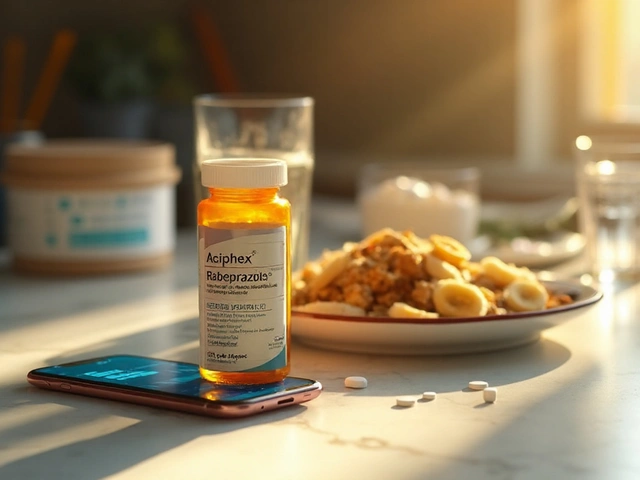If you’ve seen tannic acid popping up on supplement shelves and wondered if it’s the same stuff that makes tea taste puckery, you’re not far off. It’s trending because early research hints at antimicrobial and gut-calming effects. But does it actually “change the game,” or is it just good marketing? Here’s a simple, evidence-first guide: what it can do, where the hype outpaces the data, and how to use it safely. I’m writing this from windy Wellington, where the weather changes by lunch-your supplement routine shouldn’t be that unpredictable.
- TL;DR / Key takeaways
- Tannic acid is a plant polyphenol with astringent, antimicrobial, and antioxidant actions; most strong results are lab-based, not big human trials.
- Most people eye it for gut support (occasional loose stools, traveler’s tummy) and microbial balance; it’s not a cure for infections or chronic disease.
- Big caveat: it can reduce non‑heme iron absorption. If you’re iron‑low, pregnant, or a heavy menstruator, get medical advice first.
- No standard dose. Start low, take with food, and keep it away from medicines and iron-rich meals by a few hours.
- Choose tested products (third‑party certified), verify botanical source, and monitor how you feel over 2-4 weeks.
What tannic acid is (and what the science really says)
Tannic acid is a hydrolysable tannin-think a cluster of gallic acid units attached to a glucose core-naturally found in gallnuts, tara pods, sumac, and the bark of some trees. It’s not the same as “tannins” in red wine or black tea, though they’re cousins. Its astringency comes from how it binds proteins and metals. That binding is a double-edged sword: it can help precipitate unwanted stuff (like some bacterial toxins) but can also grab nutrients (like iron).
How it might work:
- Antimicrobial and anti-biofilm: Lab studies show tannic acid can disrupt bacterial cell walls and block biofilms, including common culprits like Staphylococcus aureus and E. coli. A 2020-2022 spread of papers in Journal of Applied Microbiology and related journals reported meaningful biofilm inhibition in vitro.
- Antiviral potential: In 2020, several teams reported tannic acid binding and inhibiting SARS-CoV‑2’s main protease in vitro, and blocking host protease TMPRSS2. That’s interesting biochemistry, but not a human treatment.
- Gut-calming: Tannins can tighten the gut’s surface proteins and slow fluid loss, which is why tannin-rich plant extracts (like carob) have been used for diarrhea. Small clinical studies (not all with pure tannic acid) showed shorter duration of acute diarrhea, especially in children and travelers. Extrapolating to a purified supplement takes caution.
- Metabolic angles: In animals, tannic acid inhibits pancreatic lipase (the fat-digesting enzyme) and nudges cholesterol markers. Human trials are thin, so don’t buy it as a fat-loss pill.
- Antioxidant and anti-inflammatory: It scavenges free radicals and can downshift NF‑κB signaling in cells. That’s supportive, not a stand‑alone therapy.
What respected bodies say about supplements more broadly is a good anchor for expectations:
“Dietary supplements can help you meet nutrient needs, but they cannot take the place of the variety of foods important to a healthy diet.” - National Institutes of Health, Office of Dietary Supplements
So, is tannic acid “changing the game”? It has a compelling toolkit-binding proteins and metals, disrupting biofilms, curbing enzymes-so it’s a smart adjunct in specific scenarios (think occasional loose stools and microbial balance). But game-changing? Not yet. The big, well-controlled human trials aren’t there. Use it like a spanner in a small toolkit, not a sledgehammer.
Is tannic acid right for you? A simple decision guide
Match your goal to what tannic acid can plausibly do today, not what a headline promises.
- If your main issue is occasional loose stools (travel, food change, mild gut bugs): Tannic acid may help tighten things up for a few days. Hydration and electrolytes still come first.
- If you struggle with chronic IBS‑D: Some people notice benefit during flares, but long‑term daily dosing isn’t well studied. Work with a clinician and track symptoms.
- If you’re chasing “antiviral” protection or a cure for infections: Good lab science, minimal human evidence. Stick to proven prevention, vaccines, and treatments; ask your GP before adding anything.
- If you want weight loss: Don’t. Evidence in humans is not there. Focus on protein, fiber, steps, sleep.
- If you’re iron‑low, pregnant, breastfeeding, a teen, or a heavy menstruator: Tannic acid can reduce iron absorption. Get a ferritin test and medical sign‑off first.
- If you take daily medicines or minerals: Space tannic acid at least 2-3 hours away. Its binding powers are not selective.
Quick rule of thumb: if the benefit you want relies on “killing” or “blocking,” tannic acid might assist; if it relies on rebuilding (like anemia recovery), it might get in the way.
New Zealand context: Here, most supplements are sold under food regulations. Check labels that comply with Food Standards Australia New Zealand (FSANZ) and keep an eye on Medsafe advisories for safety updates. If you’re an athlete (hi from windy Wellington’s waterfront runners), look for Informed Sport or HASTA certification to reduce contamination risk.

How to use tannic acid safely: steps, dosing sense, and timing
There’s no official daily allowance for tannic acid. Commercial products typically list a serving in the low hundreds of milligrams. Because individual tolerance varies, start low and pay attention.
- Start with the minimum effective label dose. If your capsule is 250 mg, begin with one capsule daily for 3-4 days.
- Take with food to reduce stomach upset. Avoid pairing with iron-rich meals (like steak or fortified cereals) and calcium/iron/zinc supplements.
- Space it 2-3 hours away from medicines. Tannic acid may reduce absorption of some drugs. If you’re on critical meds (thyroid, heart, anticoagulants, antibiotics), talk to your prescriber first.
- Hydrate well. Astringent compounds can firm stools; water keeps things comfortable.
- Reassess at 2 weeks. If you feel better without side effects, you can maintain the lowest dose that works. If nothing changes, don’t just increase indefinitely.
- Use in short blocks for acute issues. Many people do 3-7 days during a gut wobble or travel. Long-term daily use lacks evidence.
- Stop and seek care if you notice ongoing abdominal pain, dark stools, jaundice, or persistent fatigue. Don’t self-treat serious symptoms.
Possible side effects:
- Common: nausea, constipation, stomach cramping, a chalky or puckery mouthfeel.
- Less common: headaches, reduced appetite.
- Nutrient effects: impaired non‑heme iron absorption; potentially reduced absorption of some minerals and medicines if timed together.
Interactions and cautions:
- Iron: If you supplement iron, keep it 3-4 hours apart, and retest ferritin in 8-12 weeks.
- Antibiotics: Some binders can reduce antibiotic levels. If you’re on antibiotics, ask your GP or pharmacist how to space it, or press pause until you finish the course.
- Liver history: High doses of tannins have caused liver stress in animals. If you have liver disease, get medical clearance.
- Kids: Don’t use without paediatric advice. Some diarrhea studies used tannin-rich foods, not purified tannic acid.
Pro tip I use with clients here in NZ: don’t change more than one variable at a time. If you add tannic acid during a tummy flare, don’t also overhaul your diet that week. You’ll never know what helped.
What to buy, how to compare, and quick checklists
Not all bottles are created equal. Here’s how to avoid the duds.
Quality checklist:
- Botanical source listed: gallnut (Quercus infectoria), tara (Caesalpinia spinosa), or sumac. If it just says “tannic acid” with no source, that’s a yellow flag.
- Standardization: Look for a defined tannic acid content (for example, ≥90-95% by gallotannin assay). Vague “tannin complex” claims aren’t helpful.
- Contaminant testing: Heavy metals (lead, arsenic, cadmium), pesticides, and microbes. A certificate of analysis (COA) should match the lot number.
- Third-party certification: Informed Choice/Informed Sport, NSF, BSCG, or HASTA (for athletes). These reduce-but don’t eliminate-risk.
- Transparent dosing: Clear mg per capsule, serving size, and instructions.
- Packaging: Light-protective bottle, desiccant inside, realistic expiry date. Polyphenols don’t love heat and humidity.
How tannic acid compares to popular polyphenol options:
- Versus green tea extract (EGCG): EGCG is better studied for metabolic and cardiovascular markers; tannic acid is stronger at protein/metal binding and biofilm disruption. EGCG can also affect the liver at high doses; both need respect.
- Versus grape seed extract (OPCs): Grape seed targets blood vessel health and edema; tannic acid leans into astringency and microbial effects.
- Versus quercetin: Quercetin is anti-inflammatory and mast-cell stabilizing; tannic acid is a binder and astringent. If your goal is histamine support, quercetin usually wins.
- Versus activated charcoal or bismuth for tummy troubles: Charcoal is a broad binder and can cause constipation; bismuth subsalicylate helps traveler’s diarrhea but isn’t for everyone. Tannic acid sits between, with more selective protein binding.
When to choose tannic acid:
- You want a short-term aid for loose stools or to support microbial balance during travel.
- You prefer a plant polyphenol approach to a binder-like supplement.
- You can keep it away from iron and medications.
When to choose something else:
- You’re iron-deficient or pregnant and can’t space doses reliably.
- Your main aim is cholesterol, blood pressure, or glucose control-green tea extract or berberine (with medical oversight) may be more evidence-backed.
- You need a doctor-directed plan for infection or IBS with red flags (weight loss, blood in stool, fever).
Simple starter plan (example):
- Pick a product that states “tannic acid (from gallnut), 250 mg per capsule,” with third‑party testing.
- Trial 250 mg with your main meal for 3 days while keeping a symptom note on your phone (stool consistency, urgency, cramping).
- If helpful and tolerated, continue 3-7 days and then stop. Reserve for travel or flares.
- Keep iron-rich meals at breakfast and take tannic acid at dinner, or vice versa, never together.
- Reassess after two weeks. If there’s no clear benefit, park it.
Mini‑FAQ
- Is tannic acid the same as the tannins in tea? Related, not identical. Tea is rich in catechins (like EGCG) and condensed tannins; tannic acid is a specific hydrolysable tannin often from gallnuts or tara.
- Can tannic acid stain teeth? It’s astringent and can contribute to staining in beverages. In capsule form, the risk is low. Don’t open the capsules and swish.
- Will it help SIBO? There’s no solid human trial saying yes. Some people feel less bloating, others feel constipated. If you try it, do a short, monitored trial.
- Can I take it with probiotics? Yes, but separate them by a couple of hours so you’re not making life harder for the microbes you paid for.
- Is it safe long‑term? We don’t have great long‑term data in humans. Use it in short blocks unless a clinician advises otherwise and monitors labs.
Next steps and troubleshooting
- If you’re an athlete: Choose an Informed Sport/HASTA‑certified brand, trial it in training first, and watch for GI changes before race day.
- If you’re prone to low iron: Test ferritin first. If you still want to try it, keep a 4‑hour gap from iron, add vitamin C to iron‑rich meals, and recheck ferritin in 8-12 weeks.
- If you’re on multiple meds: Ask your pharmacist to help you map timing. In NZ, your local chemist is brilliant at this.
- If you get constipated: Increase fluids, add kiwi fruit or psyllium, and reduce the dose or switch to “as needed” use.
- If you feel nothing at all: That’s data. Retire it and focus on fiber (30 g/day), protein at each meal, sleep, steps, and stress-boring, but it works.
Evidence pointers (so you can read deeper):
- Antimicrobial and anti-biofilm actions: Journal of Applied Microbiology (2020-2022), multiple in vitro studies on S. aureus, E. coli, and Pseudomonas biofilms.
- Antiviral mechanisms: 2020-2021 biochemical work showing binding to SARS‑CoV‑2 main protease (Mpro) and TMPRSS2 inhibition.
- Diarrhea and tannin-rich extracts: Clinical studies using carob pod and other tannin‑containing preparations showed shorter duration of acute diarrhea; extrapolation to purified tannic acid requires caution.
- Iron absorption: Nutrients and American Journal of Clinical Nutrition reviews on polyphenols and non‑heme iron bioavailability from 2014-2020.
- Regulatory/labelling context: FSANZ standards for dietary supplements in Australia and New Zealand; Medsafe advisories for safety updates.
Final thought from a windy Wellington kitchen bench: treats and tools have their place. So does a clear head. If you try a tannic acid supplement, keep it simple-short trials, sensible timing, and honest tracking. If it helps, great. If not, you saved yourself from the supplement drawer of broken promises.






Written by Martha Elena
I'm a pharmaceutical research writer focused on drug safety and pharmacology. I support formulary and pharmacovigilance teams with literature reviews and real‑world evidence analyses. In my off-hours, I write evidence-based articles on medication use, disease management, and dietary supplements. My goal is to turn complex research into clear, practical insights for everyday readers.
All posts: Martha Elena